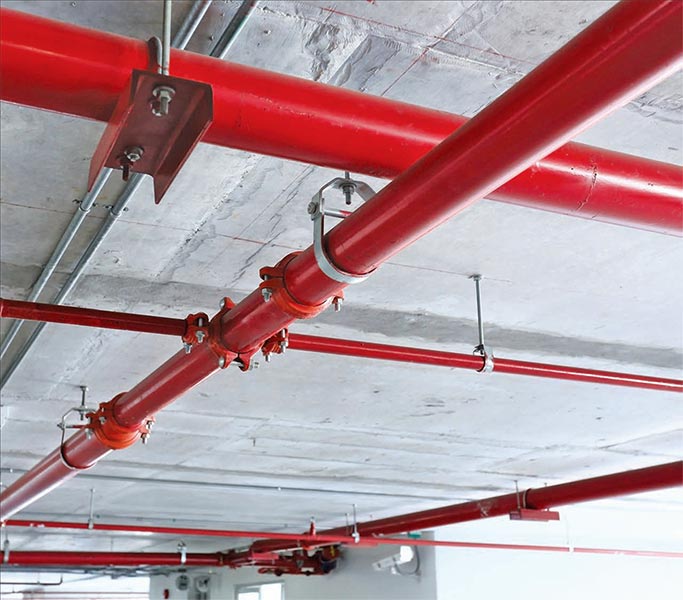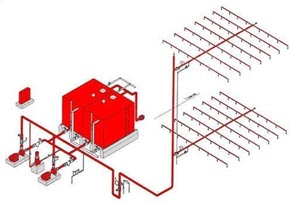The Fire Hydrant System offered by Chandralop Fire Safety Pvt. Ltd Systems complies with the highest standards in quality and is widely-appreciated for its efficiency and reliability. The Water Fire Hydrant System is well-renowned and no comparable alternative is available in terms of dependability and performance. Customers are put totally at ease with the easy availability of the Fire Hydrant System and its multiple salient features.


Fire Sprinkler Systems that are installed in various industries and commercial projects to ensure effective safety measures. These fire sprinklers are maintained with the support of the water supply system that provides enough pressure and flow rate to the water distribution piping system, to which the fire sprinklers are connected. Our fire sprinkler systems are distinguished by superior quality standards and innovative design.
The most common type of fire sprinkler, wet pipe fire sprinklers are found in most homes and office buildings. With a wet pipe fire sprinkler, all the water is stored under pressure directly in the sprinkler pipes and is released by heat-activated sprinkler heads. The best thing about a wet pipe fire sprinkler system is that they acylate instantly - there's no lag time between the fire sprinkler heads opening and the water being released.


Dry pipe fire sprinkler systems are similar to wet pipe, except the water is not stored in the pipes. Instead, the pipes are filled with pressurized air or nitrogen gas. When the sprinkler heads open, the gas is released, and a valve opens that allows water to flow out through the open fire sprinkler heads. This causes a slight delay (usually only a second) in water discharge, but it is useful in buildings where water could freeze if kept in the pipes.
Smoke is fire’s greatest weakness, because it provides us an early warning of the threat of fire. If we can detect smoke quickly enough and take advantage of that tell-tale sign, we can gain a real edge in our fight against fire. That is the reason why virtually every large establishment in the world places smoke detection systems high on their list of priorities. As the fire detector picks up smoke signals and sends out an early alarm, the time window we get can save precious lives and expensive premises. For, as we all know, without early warning, the fight against fire is all but lost.


Simple PA systems are often used in small venues such as school auditoriums, churches, and small bars. PA systems with many speakers are widely used to make announcements in public, institutional and commercial buildings and locations—such as schools, stadiums, and passenger vessels and aircraft. Intercom systems, installed in many buildings, have both speakers throughout a building, and microphones in many rooms so occupants can respond to announcements. PA and Intercom systems are commonly used as part of an emergency communication system.
Portable extinguishers require periodic maintenance. Fire Systems, Inc. can provide a complete inspection as required by NFPA 10. We will make recommendations to ensure your facility is protected with the appropriate fire extinguishers. Any necessary repairs or recharges can be done on site.
Class A: extinguishers are for ordinary combustible materials such as paper, wood, cardboard, and most plastics. The numerical rating on these types of extinguishers indicates the amount of water it holds and the amount of fire it can extinguish
Class B: fires involve flammable or combustible liquids such as gasoline, kerosene, grease and oil. The numerical rating for class B extinguishers indicates the approximate number of square feet of fire it can extinguish.
Class C: fires involve electrical equipment, such as appliances, wiring, circuit breakers and outlets. Never use water to extinguish class C fires - the risk of electrical shock is far too great! Class C extinguishers do not have a numerical rating. The C classification means the extinguishing agent is non-conductive.
Class D: fire extinguishers are commonly found in a chemical laboratory. They are for fires that involve combustible metals, such as magnesium, titanium, potassium and sodium. These types of extinguishers also have no numerical rating, nor are they given a multi-purpose rating - they are designed for class D fires only.


Fire Electrical Pumps

Fire Diesel Systems